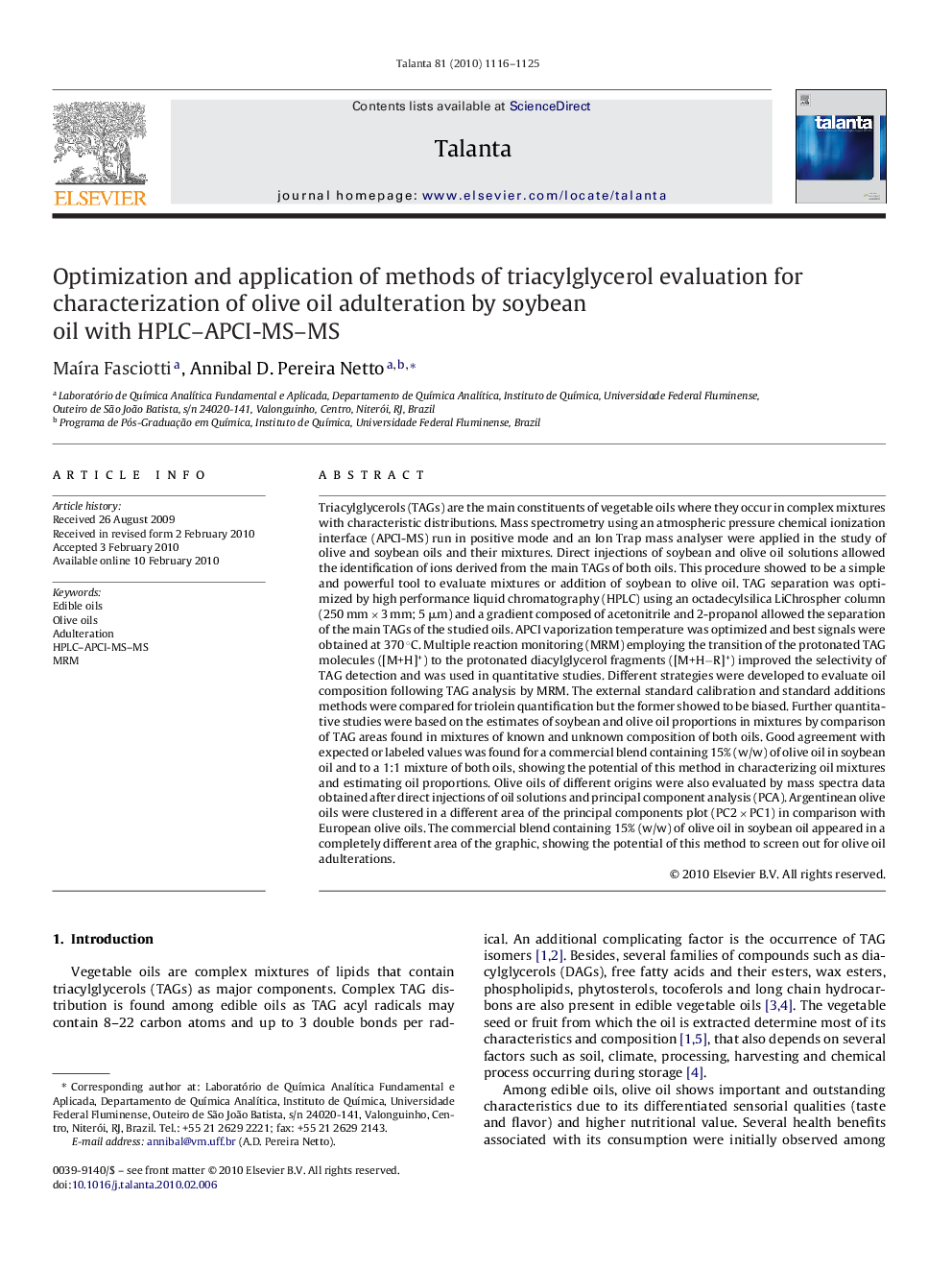| Article ID | Journal | Published Year | Pages | File Type |
|---|---|---|---|---|
| 1246545 | Talanta | 2010 | 10 Pages |
Triacylglycerols (TAGs) are the main constituents of vegetable oils where they occur in complex mixtures with characteristic distributions. Mass spectrometry using an atmospheric pressure chemical ionization interface (APCI-MS) run in positive mode and an Ion Trap mass analyser were applied in the study of olive and soybean oils and their mixtures. Direct injections of soybean and olive oil solutions allowed the identification of ions derived from the main TAGs of both oils. This procedure showed to be a simple and powerful tool to evaluate mixtures or addition of soybean to olive oil. TAG separation was optimized by high performance liquid chromatography (HPLC) using an octadecylsilica LiChrospher column (250 mm × 3 mm; 5 μm) and a gradient composed of acetonitrile and 2-propanol allowed the separation of the main TAGs of the studied oils. APCI vaporization temperature was optimized and best signals were obtained at 370 °C. Multiple reaction monitoring (MRM) employing the transition of the protonated TAG molecules ([M+H]+) to the protonated diacylglycerol fragments ([M+H−R]+) improved the selectivity of TAG detection and was used in quantitative studies. Different strategies were developed to evaluate oil composition following TAG analysis by MRM. The external standard calibration and standard additions methods were compared for triolein quantification but the former showed to be biased. Further quantitative studies were based on the estimates of soybean and olive oil proportions in mixtures by comparison of TAG areas found in mixtures of known and unknown composition of both oils. Good agreement with expected or labeled values was found for a commercial blend containing 15% (w/w) of olive oil in soybean oil and to a 1:1 mixture of both oils, showing the potential of this method in characterizing oil mixtures and estimating oil proportions. Olive oils of different origins were also evaluated by mass spectra data obtained after direct injections of oil solutions and principal component analysis (PCA). Argentinean olive oils were clustered in a different area of the principal components plot (PC2 × PC1) in comparison with European olive oils. The commercial blend containing 15% (w/w) of olive oil in soybean oil appeared in a completely different area of the graphic, showing the potential of this method to screen out for olive oil adulterations.
